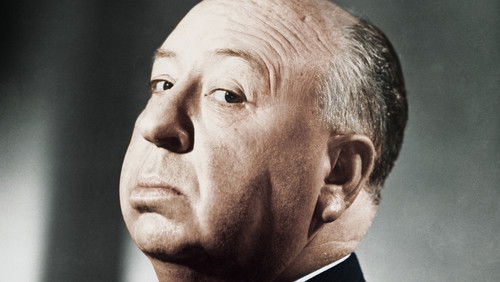Lynch (2007)
32KLynch (2007). 1h 24m | Not Rated
“In the book u0026#39;Lynch on Lynchu0026#39;, director David Lynch explains: u0026quot;Your mind focuses on a certain thing and it pulls in ideas that will marry to that thing.u0026quot; The results, as we see from Lynchu0026#39;s films, can be surreal. It links in to his use of Transcendental Meditation (TM) – a form of concentration developed by repetition of a mantra and used by the Maharishi Mahesh Yogi (to pull in vast amounts of money, among other things).u003cbr/u003eu003cbr/u003eLynch has used the technique for 32 years, as he explains in this offbeat documentary. We see the camera turned on the director at work – and in moments where he waxes philosophical. He uses TM, u0026quot;to dive into pure creativity.u0026quot; There have been many critical reports of the Maharishiu0026#39;s methods. Ex- TM teacher, Joseph Kellet says, u0026quot;As a teacher I frequently lied to people u0026#39;for their own goodu0026#39; because u0026#39;they werenu0026#39;t ready yetu0026#39; to receive the full truth. But the misuse of a technique for financial gain or fame does not, in itself, negate the value of it. Our documentary provides a fascinating insight into the creative processes of someone who is one of the most enigmatic of contemporary experimental directors. His use of TM – as a creative tool – is more accessible than some of the more extravagant claims commonly made for it (by others or by Lynch himself).u003cbr/u003eu003cbr/u003eu0026quot;Curiouser and curiouser!u0026quot; were the famous words of Alice as she delved deeper down the Rabbit Hole into Wonderland. Investigating anything to do with David Lynch tends to produce a similar sensation. Instead of questions being answered, fascinating new questions are posited. Occasionally, an underlying u0026#39;truthu0026#39; will appear to convey some sort of narrative sense. Itu0026#39;s what Lynch has called the u0026#39;Surrealistu0026#39;s Tricku0026#39;. You have a bunch of interesting, open-ended fragments that pull in other fragments, but you need a certain type of idea to come in and tie them all together. Reality becomes the excuse for dreams. But how does the artist dream? We watch Lynch in his musings. He comes out with a story about popping a dead cow. A rabbit disappearing out of the brush. Or someone he knows getting his head bashed by police. He is fascinated by what crawls just beneath the surface of beauty. We wait (as he does) while other u0026#39;fragmentsu0026#39; are drawn in. He is fascinated with taking still photographs of factory interiors. No agenda – just enjoying them for their own sake. Itu0026#39;s a bit like lateral thinking – take some unconnected ideas and find a new connection.u003cbr/u003eu003cbr/u003eJust as ideas are pulled in, just as Lynchu0026#39;s feature films intrigue and pull us in, so does this film use cinematic story-telling techniques to inveigle the viewer. We watch a close up: his hand turns a handle. Emphatic directions to the crew bring an intensity of concentration to bear. There is a strange repetitive noise, a ghostly sound, we cannot identify. Only after the viewer has been entranced does the camera pan back to reveal an old-fashioned gramophone. Lynch is winding the handle that powers the turntable. The stylus is on the endless repeat of the last groove. Sound crew record the noise amplified by the acoustic speaker.u003cbr/u003eu003cbr/u003eAs the film gets on to the early stages of filming Inland Empire, he talks about a new technique – about being u0026#39;excitedu0026#39; but u0026#39;tormentedu0026#39; by u0026#39;not knowingu0026#39;. Usually, by the time cameras are rolling, the ideas have come together and the director knows exactly what is going to happen. But we are given to understand that Inland Empire was deliberately made as a u0026#39;work in progress.u0026#39; This is, in a way, to replicate the situation that happened accidentally with Mulholland Drive. With the earlier picture, existing footage from a scrapped TV pilot was pulled together into a coherent film (admittedly you have to work at it, but a meaningful storyline and/or overall unity is now generally accepted by most serious viewers). In faithfulness to his own surrealist dictum, Lynch is making the u0026#39;fragmentsu0026#39; before he has found the u0026#39;solutionu0026#39;.u003cbr/u003eu003cbr/u003eThe photography in the documentary is – appropriately – as whacky as any Lynch film. Multiple screens, masking, slow wipes, different formats. Locked-down shots contrast with relaxed, hand-held filming. An unconnected shot of Lynch (apparently) at his desk in a bunny-rabbit suit. The inventiveness makes us feel like explorers, rather than passive recipients of a dry documentary.u003cbr/u003eu003cbr/u003eu0026quot;Lynchu0026quot; is a fascinating portrait of an intelligent, celebrated and charismatic director. No doubt it will eventually find its way into the u0026#39;extrasu0026#39; of a DVD boxed set. The heavy-handed references to Transcendental Meditation may annoy some viewers – when he gets on to his u0026#39;David Lynch Foundation for Consciousness Based Education and World Peaceu0026#39; it easy to sense excess fragments of hippy beads, flowing robes and happy-mantra vibes. But the personal relevance of TM to his own creative work is more believable.u003cbr/u003eu003cbr/u003eu0026quot;Lynchu0026quot; is a must for all fans of his work and a great add-on to his movie, Inland Empire. However crazy he might be, itu0026#39;s u0026#39;creative crazyu0026#39; rather than u0026#39;penniless and certifiable crazy.u0026#39; As a self-confessed fan of his movies, I hope he goes on making great ones and doesnu0026#39;t fall permanently down any bunny-hole.”









